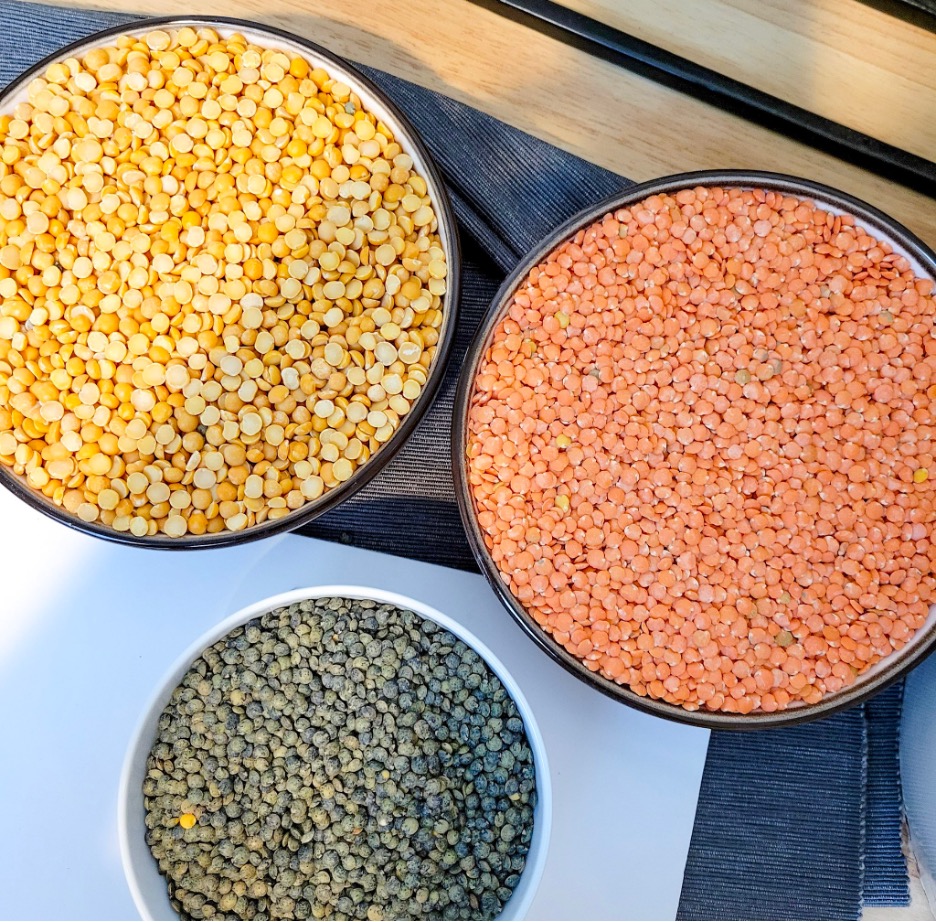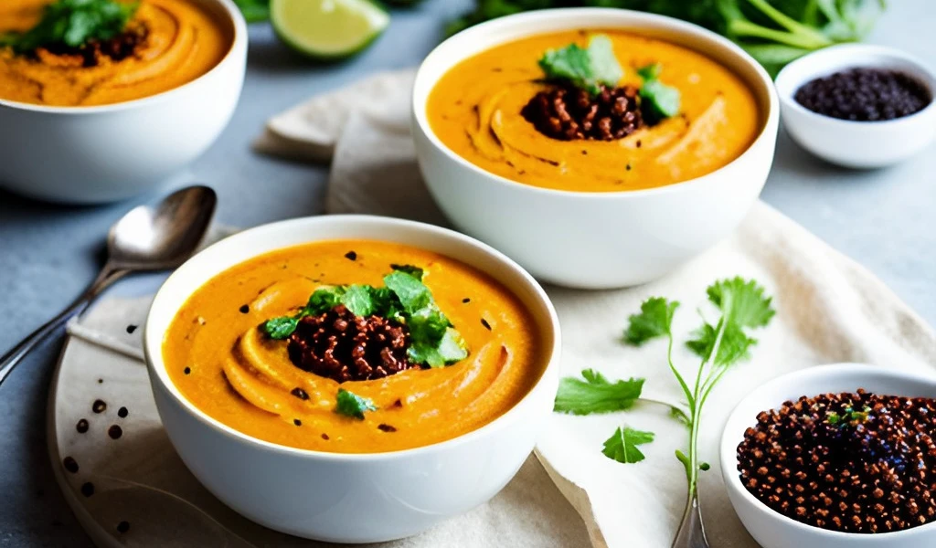
Lentils have a rich cultural significance in diverse cuisines globally and hold a significant place as a vital source of plant-based protein and fiber, making them a staple ingredient in various traditional dishes. In addition to Ethiopia, green lentils are used in iconic dishes from Kenya, Tanzania, and Uganda and are a nutritional powerhouse in East African cuisine, providing essential nutrients for a balanced diet.
Furthermore, lentils are renowned for their affordability and accessibility, making them an excellent source of nutrition for people worldwide making their way into Middle Eastern, Indian, and Mediterranean culinary traditions. Their cost-effectiveness and long shelf life make them a practical pantry staple for many households, offering a sustainable and nutritious food option. Whether used in traditional recipes or modern fusion dishes, lentils provide a versatile ingredient that can adapt to various cooking styles and flavor profiles. From spicy lentil stews to zesty lentil salads, the adaptability of lentils allows for endless culinary creativity in the kitchen.
Nutritional Value of Lentils
Lentils stand out for their exceptional nutritional value, offering a range of health benefits beyond their delicious taste. Their high protein content is particularly noteworthy, making them an excellent plant-based protein source that can easily replace meat or fish in various dishes. This protein content not only helps in building and repairing tissues but also supports muscle health and provides a feeling of fullness, which can aid in weight management and weight loss goals.

In addition to being a protein powerhouse, lentils are packed with fiber, which plays a crucial role in digestive health. The fiber in lentils supports regular bowel movements, prevents constipation, and fosters a healthy gut environment by nourishing beneficial gut bacteria. Moreover, the fiber content in lentils contributes to satiety, helping individuals feel fuller for longer periods and potentially reducing overall caloric intake. This can be beneficial for those looking to manage their weight or improve their digestive well-being.
Furthermore, lentils are abundant in essential vitamins like vitamin B, iron, and folate, all of which are vital for various bodily functions. Vitamin B aids in energy production, iron is essential for oxygen transport in the blood, and folate is crucial for cell division and DNA synthesis. By incorporating lentils into your diet regularly, you can ensure that your body receives these essential nutrients to support overall well-being and maintain optimal energy levels throughout the day.
Health Benefits of Lentils

Lentils are a powerhouse of health benefits that go beyond aiding in weight management and supporting weight loss goals. In addition to these advantages, lentils play a crucial role in reducing the risk of chronic diseases such as heart conditions, diabetes, and certain types of cancer. The rich prebiotic fiber content found in lentils supports the growth of beneficial gut bacteria, which is essential for maintaining a healthy digestive system. Furthermore, lentils are known to have a low glycemic index, making them an excellent choice for managing blood sugar levels and promoting overall metabolic health.
Moreover, the high levels of plant-based protein in lentils make them an ideal meat alternative for individuals looking to boost their protein intake without consuming animal products. This protein content not only aids in muscle repair and growth but also helps in keeping you feeling full and satisfied for longer periods. Additionally, lentils are packed with essential vitamins and minerals like iron, folate, and potassium, which are vital for various bodily functions, including maintaining healthy blood cells and supporting overall well-being. By incorporating lentils into your diet regularly, you can reap a wide range of health benefits that contribute to your long-term wellness and vitality.
Variety of Lentils Available
When it comes to lentils, there is a wide array of options available to cater to different tastes and preferences. Brown lentils, for instance, are the most common type and hold their shape well when cooked, making them ideal for dishes like soups and stews. On the other hand, green lentils, such as Puy lentils, have a slightly peppery flavor and are often used in salads or as a side dish due to their firmer texture after cooking.

Red lentils, which cook faster than other varieties and turn golden when cooked, are frequently used in Indian dal recipes or to thicken soups. Additionally, black lentils, also known as beluga lentils due to their resemblance to caviar when cooked, have a rich, earthy flavor and a firm texture, making them perfect for salads or combined with grains for a hearty meal.
Yellow lentils, also known as split yellow mung beans, are versatile and can be used in a variety of dishes. They cook quickly and have a mild, nutty flavor that pairs well with a range of spices and seasonings.
Each color of lentil offers unique health benefits based on its nutrient content. For example, red lentils are high in iron, while green and brown lentils are excellent sources of fiber. Black lentils, on the other hand, are packed with antioxidants, which help combat inflammation and promote overall well-being. By incorporating a variety of lentils into your diet, you can not only enjoy diverse flavors and textures but also benefit from a range of essential nutrients to support your health.
Cooking Tips for Lentils
When preparing lentils, soaking them before cooking can help reduce anti-nutrients present in the legume, making them easier to digest and ensuring optimal nutrient absorption. Additionally, cooking lentils properly is essential not only for improved digestibility but also to enhance their flavor and texture in dishes. For example, red lentils are known for their ability to cook quickly and break down easily, making them ideal for soups and dals, while green or brown lentils hold their shape better and are suitable for salads and side dishes.
Moreover, lentils can be flavored and seasoned in various ways to suit different culinary preferences, from adding herbs and spices for a Middle Eastern-inspired dish to incorporating coconut milk and curry for a more Indian-inspired flavor profile. Understanding the unique characteristics of each lentil variety and experimenting with different cooking methods can help individuals make the most of these nutritious legumes while adding diversity to their meals.
Nutritious Black Lentils and Sweet Potatoes Recipe

When it comes to health benefits, the combination of black lentils and sweet potatoes offers a powerhouse of nutrients. Black lentils, also known as beluga lentils for their resemblance to caviar, are rich in plant-based protein, fiber, iron, and folate. These tiny legumes are not only visually striking but also bring a hearty texture to dishes, making them a versatile ingredient for various recipes. On the other hand, sweet potatoes are a vibrant source of beta-carotene, vitamin C, and fiber, contributing to eye health, immunity, and digestion. The pairing of these two ingredients not only creates a colorful and visually appealing meal but also provides a well-rounded nutrient profile.
In addition to their nutritional value, black lentils, and sweet potatoes complement each other perfectly in terms of taste and texture. The earthy and slightly nutty flavor of black lentils pairs harmoniously with the natural sweetness of roasted sweet potatoes. This blend of flavors creates a balanced and satisfying dish that appeals to a wide range of palates. Moreover, the combination of these ingredients offers a mix of complex carbohydrates, protein, and essential vitamins, making it a wholesome and filling meal option for vegetarians and omnivores alike.
Leave a Reply